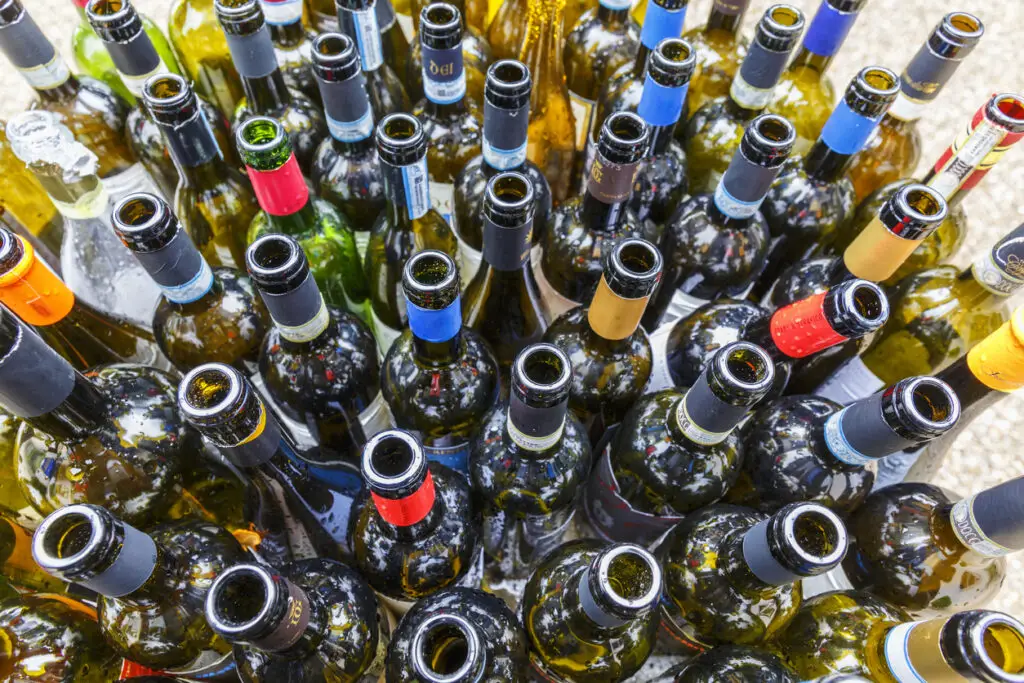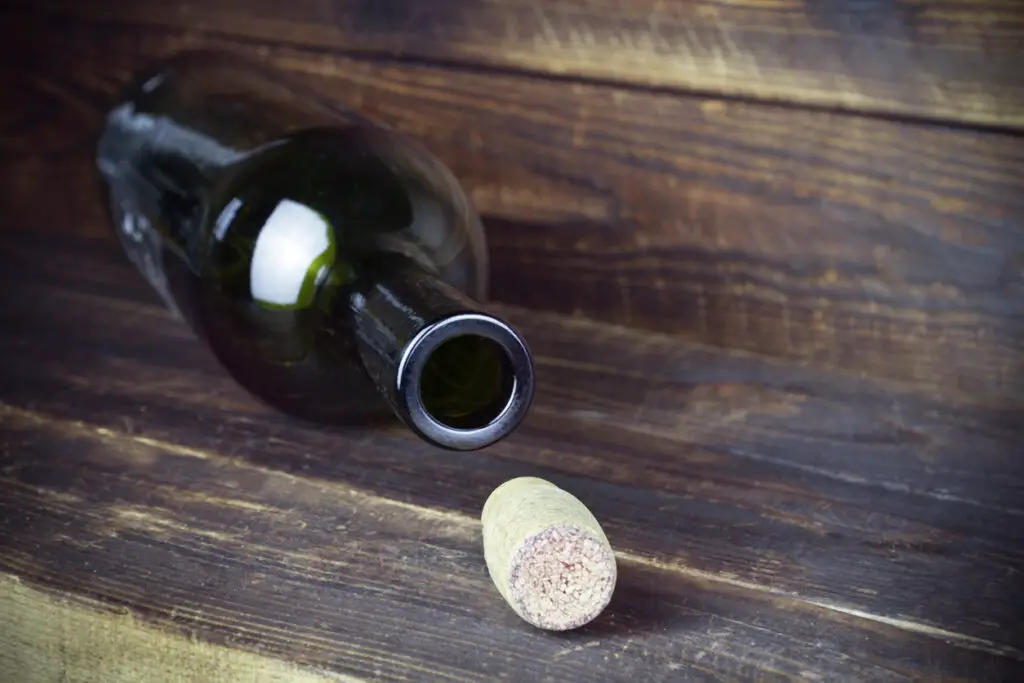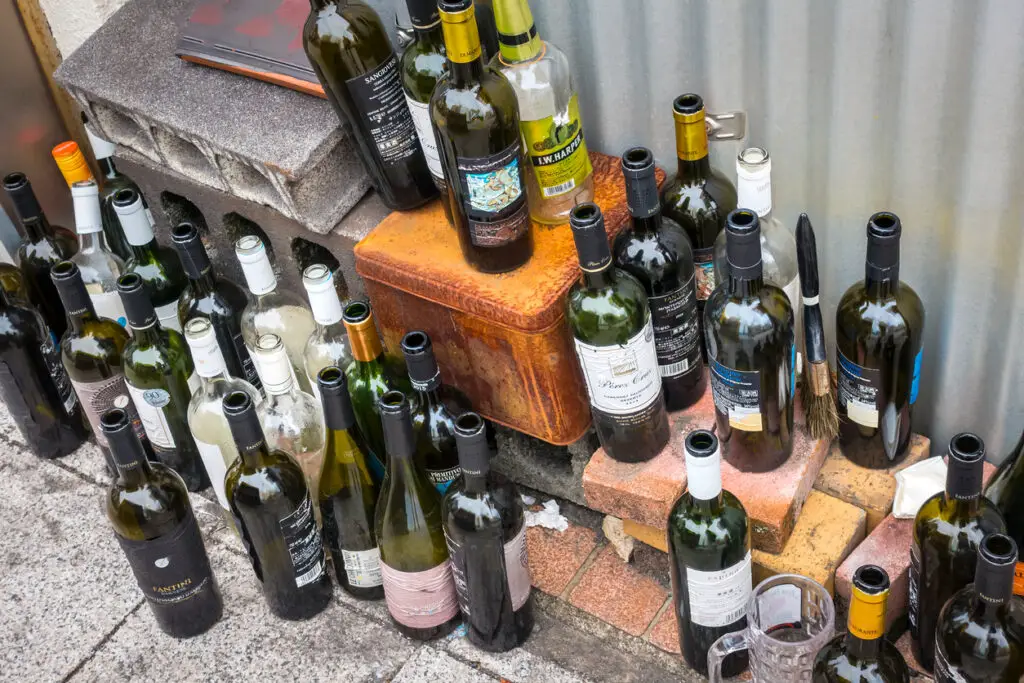Are you a bottle half-full or half-empty type of person? Well, whichever you are, you definitely do not like throwing out some perfectly good wine because you’ve heard that storing wine for later may ruin it. After enjoying some sweet Port wine as dessert, you may still have some leftover. So you may be thinking, what are the best practices on how to store Port after opening?
After being opened, port wine is best if stored in the fridge in an upright position since it won’t be sealed anymore. If you have a dedicated wine fridge, you may also store it there, but a standard refrigerator will also work fine. Just keep in mind that the average temperature of a kitchen fridge designed for food is a chilly 38 degrees, so you must let your Port warm up again before drinking to let all the rich flavors be expressed.
Now how long Port wine lasts after being opened is a whole other story, so let’s take the plunge!
How And Where Is Port Made?
First, let’s find out where this wine is made and just why it tastes so sweet. Specific grapes grown in the Douro region are used to make Port wine. Once this process is finished, aguardiente is added, which is a neutral grape spirit.
This spirit stops fermentation and boosts the alcohol meaning the sugar is left for the sweetness. The fortification spirit is also sometimes called brandy. This finished wine is stored in a barrel and aged in a wine cellar.
This delicious wine was named “port” in the 17th century after the city of Porto near Douro River, which is where most of the wine is produced. The microclimate of the Douro Valley makes it the perfect spot for the cultivation of port wine grapes.
Author Note: This valley reaches from the village of Barqueiros eastward to near the Spanish border. This vineyard area is divided into three smaller regions, the Baixo (lower) Corgo, the Cima (higher) Corgo, and the Douro Superior.
The Baixo Corgo is located downstream from the Corgo river, while the Cima Corgo is slightly more upstream. Grapes from the Baixo region are made into inexpensive port wines since it is the wettest growth zone.
Grapes from the Cima region are used to bottle Vintage, Reserve, aged, and Late Bottled Ports, which are more expensive and of higher quality. The Douro Superior region is the least cultivated due to the difficulty of getting there.
A Brief History of Port Wine

Before we get to how to store Port after opening it, here is some history about the culture of Port winemaking.
The Duoro area is the third oldest protected wine region in the world, so you can tell that Port wine has been flourishing for a long time now.
The first time Port wine was brought out of the area was in 1678, when a Liverpool merchant sent two representatives to Viana do Castelo to study the culture. The two men were vacationing and visited the Abbot of Lamego, who provided them with a “very agreeable, sweetish and extremely smooth” wine,” which included the addition of a distilled spirit similar to the ones used today.
The two men bought the entire lot available and shipped it home because of how much they liked the flavor.
Port Grows in Popularity
Following the Methuen Treaty of 1703, Port wine started to rise in popularity in the English regions. Merchants could import it at a low duty because the English were deprived of French wine during the war.
One of the first official steps to make this wine “official” was done in 1756 by the Marquis of Pombal. The Douro Wine Company was founded to keep the quality of the wine along with pricing consistent. This company also chose which Port wines were for export and which were to be only consumed internally.
Top Tip: The British were and still are very involved in the trade of port wines. Many famous Port brands and shippers are English, such as Broadbent,
Campbell, and Graham, being amongst the best known. The British were so involved that they created a trade association, which later became a gentlemen’s club called the British Factory House.
Now you may still be wondering how to store Port after opening? We learned about the history and regions of the wine culture, so let’s get to the drinking.
How to Store Port After Opening?
Of course, it is preferable if you finish a bottle of wine once it has been opened, but if you usually drink alone, then you should know how to store Port after opening. Most port wines come with reusable cork, which can be used to seal the bottle. Store the wine bottle in the fridge in an upright position.
Both a kitchen food fridge or a special wine refrigerator will work. But, the wine will be chilly after you take it out, so warm it up before you start drinking it again.
Next time you have some wine left over from your dinner party, don’t fret! You can always store it to enjoy later.
When And How To Serve Port Wines?

Planning a dinner party can be surprisingly difficult, especially when it comes to picking the wine and the pairings to go along with it. Lucky for you, Port wine is very versatile and can be paired with lots of types of food. It is usually served at the end of a meal along with a variety of fine cheeses, dried fruits, and nuts.
But, it can also be served chilled with a delicious appetizer. Let’s go through the popular types of port wines and figure out how they are best served.
Full And Fruity Red Ports
These wines include Ruby Ports, Late Bottled Vintage Port, and Reserve Ports. Even though these wines have different levels of sophistication and complexity, they all share a deep red color and strong fruity flavors similar to cherry, blackcurrant, and blackberry.
These wines mustn’t be decanted and are the perfect finish to any meal. There is a whole variety of cheeses that go along with these wines. So, research your specific wine to find a cheese that matches it well. If you have a sweet tooth and want a dessert pairing, try a chocolate tart or a dark chocolate mousse with some fruit – a heavenly pairing!
Rich Tawny Ports
These wines are the mellow 10, 20, 30, and 40 year old tawny Ports with delicious nutty and butterscotch aromas, along with a hint of fine oak. When served chilled, they pair well with nutty and fruity flavors of a Comté or a Pecorino.
If you prefer a dessert – try matching the wine with an almond tart, pecan pie, or crème brûlée. An apple crumble with vanilla ice-cream also goes very well with tawny Ports.
Vintage Ports
The Vintage Ports pair well with walnuts, along with other richly flavored cheeses. Dried fruits like apricots or figs are also perfect for vintage wines. But, these wines are so rich on their own, sometimes all you need is good company as a pairing.
White Ports
White Port is made similarly to ruby Ports, but white grapes are used instead of red. They are usually served chilled as an aperitif. These wines are best accompanied by salted almonds or olives as the ideal summer drink.
Author Note: Now we aren’t saying these are the only possible combinations of food and Port wines. Don’t be afraid to experiment and try out crazy pairings to find what works best for you!
How Long Can I Keep An Open Bottle of Port Wine?
Okay, now your wine is open and stored, but just how long can it stay there? Well, that
depends on what type of Port you are drinking.
Vintage Ports

Young Vintage Ports(less than five years old) usually last about 4-5 days once opened. Port wines that are more than 15 years old cannot be left open for over 2-3 days. They won’t spoil or be undrinkable, but the wine will lose its unique bright flavor.
Older wine that is more than 25-30 years old is best if finished within 24-48 hours.
LBV Ports
Unfiltered LBV Ports can last for two to three weeks if they are stored at approximately 8 °C to 10°C. Filtered LBV Ports can last around 10 to 12 days after opening, without any significant loss of quality.
Aged Tawny Port
Aged tawny port wines that are 10-40 years old can last up to two months after being opened without any noticeable difference. But, keep in mind that they must be stored in a cool and dark place. If they are being stored at normal room temperature, they will only last three to four weeks.
Ruby and Tawny Ports
Ruby and basic Tawny Ports can usually last 4-6 weeks after being opened without any signs of flavor loss. Though ideally, you would finish a Ruby Port within around one month of opening – and a Tawny Port within two months after being opened.
Our Last Toast
Port wines have been loved by many people and aren’t going away anytime soon. The key is to pair it with some delicious fruit, know how to store Port after opening, and finish it soon after opening. Take all these tips as guidance, but not as laws. There are no rules for enjoying wine, so just taste the flavors and enjoy an aromatic evening glass!
To living a full-bodied life,
Wesley

